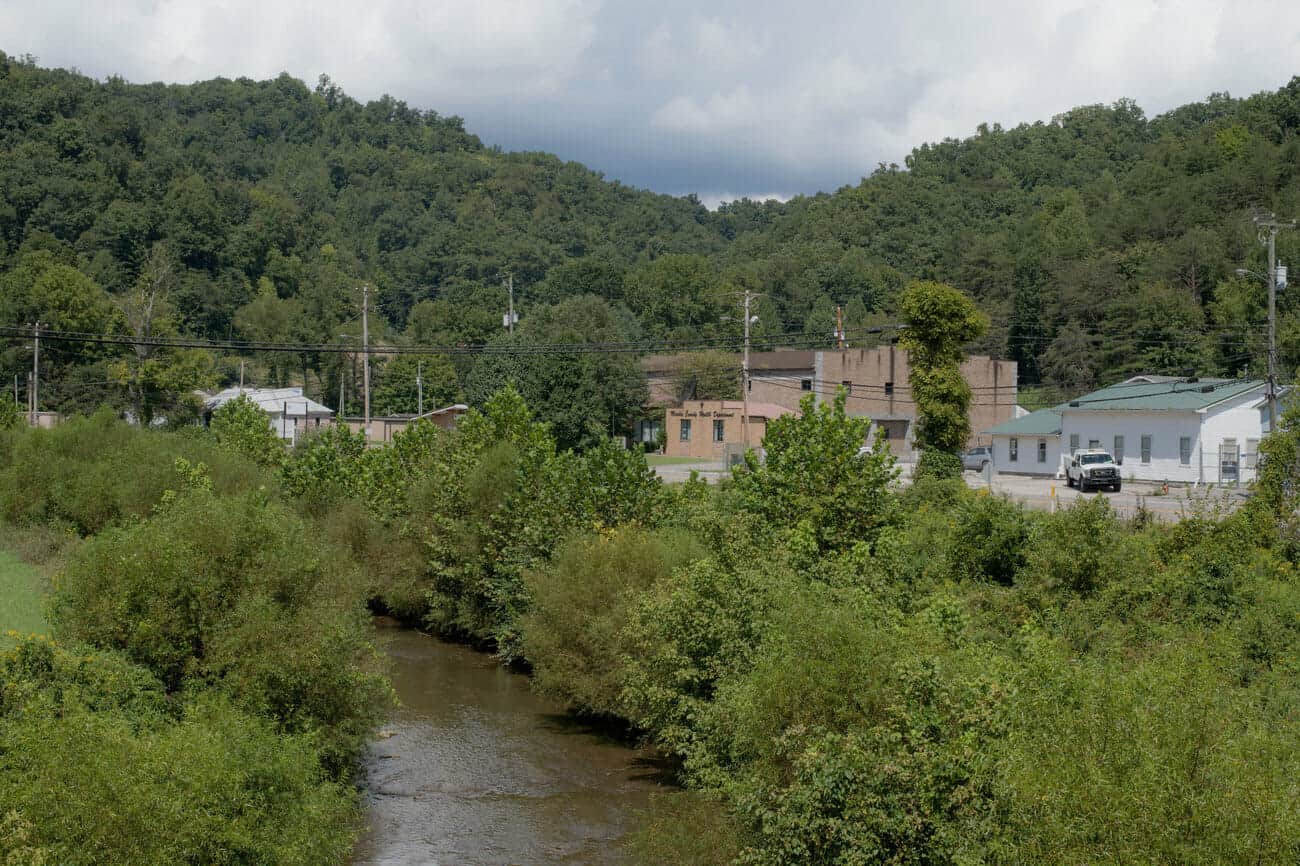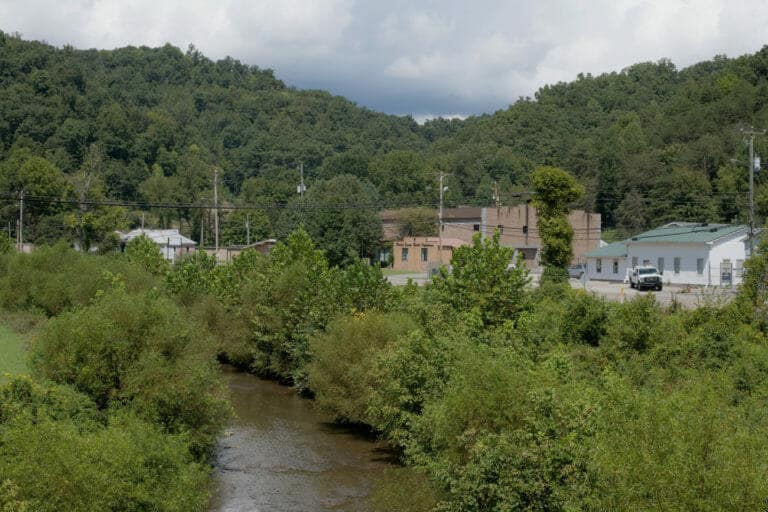Rockcastle Creek flows past residential homes and businesses along Route 3 in the town of Inez, the county seat of Martin County, Ky. A giant coal sludge spill in October 2000 contaminated the county’s rivers for miles, and locals still don’t trust the water. Rich-Joseph Facun for NPR
Aleigha Sloan can’t remember ever drinking a glass of water from the tap at her home. That is "absolutely dangerous," the 17-year-old says, wrinkling her nose and making a face at the thought.
"You just don’t touch that tap water unless absolutely necessary. I mean, like showers and things — you have to do what you have to do. But other than that, no," she says. "I don’t know anybody that does."
Sloan sits on the couch in her family’s cozy two-story house, tucked back along winding rural roads in Huntleyville, Ky., near the West Virginia border. Her mother, BarbiAnn Maynard, 41, is in the kitchen, emptying out a plastic 5-gallon jug that she uses to fetch cooking water from a local spring.
"You take it for granted until you don’t have it," Maynard says about a clean water supply. "I think that’s the attitude of a lot people right now, but I don’t think they understand how close they are to it happening to them.”
Americans across the country, from Maynard’s home in rural Appalachia to urban areas like Flint, Mich., or Compton, Calif., are facing a lack of clean, reliable drinking water. At the heart of the problem is a water system in crisis: aging, crumbling infrastructure and a lack of funds to pay for upgrading it.
On top of that, about 50 percent of water utilities — serving about 12 percent of the population — are privately owned. This complicated mix of public and private ownership often confounds efforts to mandate improvements or levy penalties, even if customers complain of poor water quality or mismanagement.
Drinking water is delivered nationally via 1 million miles of pipes, many of which were laid in the early to mid-20th century, according to the American Society of Civil Engineers. Those pipes are now nearing the end of their life spans.
A 2017 report by the group gave America’s water systems a near-failing grade, citing an estimated 240,000 water line breaks a year nationwide.
The Environmental Protection Agency estimates it will cost the country nearly $400 billion to fix the problem — a burden that would fall largely on[…]
Full article: ‘You Just Don’t Touch That Tap Water Unless Absolutely Necessary’
More about water in Kentucky, Appalachia, and nearby regions:
Report: Kentucky Water Systems Serving 1.5 Million Violated Health Standards
Groundwater Monitoring Reveals Widespread Radioactivity at Duke Energy Coal Plants
Pesticide Chemical Spill Kills Tens of Thousands of Fish in Virginia
White-Water Rafting the Nantahala River in North Carolina



